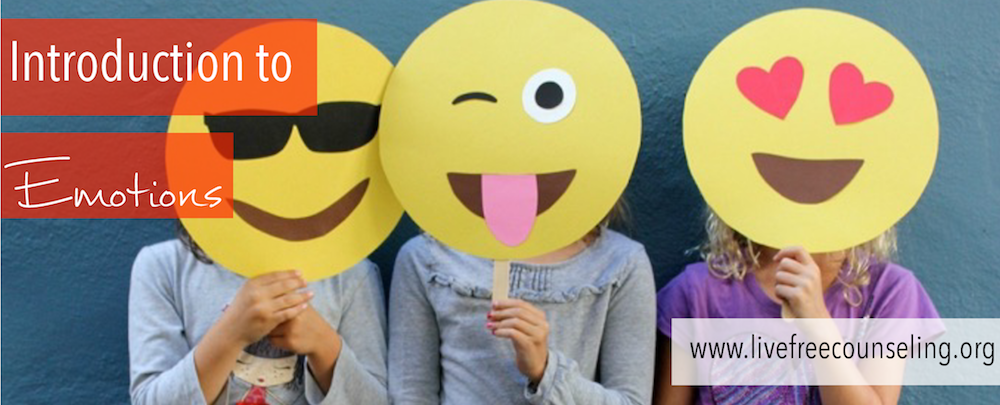Emotions can be challenging to talk about and navigate, especially with children. As we move through this month’s postings, I hope to give you some ways to better help your kids talk about their feelings and emotions. By partnering in this process with me, I hope, too, that your family will grow closer and stronger. Addressing emotions may be an elusive or frightening task for you. You have every right to feel this way, and I want to acknowledge that emotional language might be new for you. Eventually, you may be able to voice this same concern with your family – for now, let me address the basics.
Anger, sadness, fear, happiness, pain, grief, and anxiousness can all be expressed as emotions – just to name a few. Has your child ever yelled at you in a rage? Has he or she curled up in the corner, crying for a while? Have you seen one of your kids fidget around, while they keep bringing up the same concern over and over? It is very possible that you don’t understand where their attitude or actions are coming from, and it is just as likely that you may see their anger or tears as unfitting to a particular situation. Maybe they are yelling back when you’ve just asked a seemingly simple question about dinner, or maybe they recoil in tears when you ask a normal question about their day at school. It is also possible to see multiple, unexplainable emotions bubbling from your child all at once. For some, the natural inclination may be to step back and leave your child alone, or to “shut down” what they are expressing because it is too distressful at the moment. This is a natural reaction as children’s emotions can be very triggering for parents. You might be trying to focus on dinner or maybe you are on the phone, patiently waiting for customer service. It is easy to label an emotion as “good” or “bad,” “right” or “wrong” or conclude that your child’s anger or sadness is inappropriate for a given situation. I want to offer a different view.
For many children, even older teens, what is going on in their heads and hearts just doesn’t add up. They were clearly bullied on the playground today, yet they lash out in anger once they are asked about finishing homework or cleaning up for dinner. They failed a test at school, but they break down in tears after you share that weekend plans have changed. Their emotions may seem “bad” or even strange to you as the adult, but to that child, things don’t make sense in the moment – or they just don’t know how to articulate what’s going on inside. They can’t seem to connect A to B. The challenge as parents is to pause. Take a step back and ask yourself, “Am I placing a label on my child’s feelings or emotions?” or, “What may they really be mad/sad/worried about here?” The action of stepping back can hard at first, but it will be worth it. I want to challenge you to think of emotions as normal, real reactions to something going on for your child – not as “good” or “bad” expressions. Stay tuned for next week’s blog about how to address emotions with your children.

